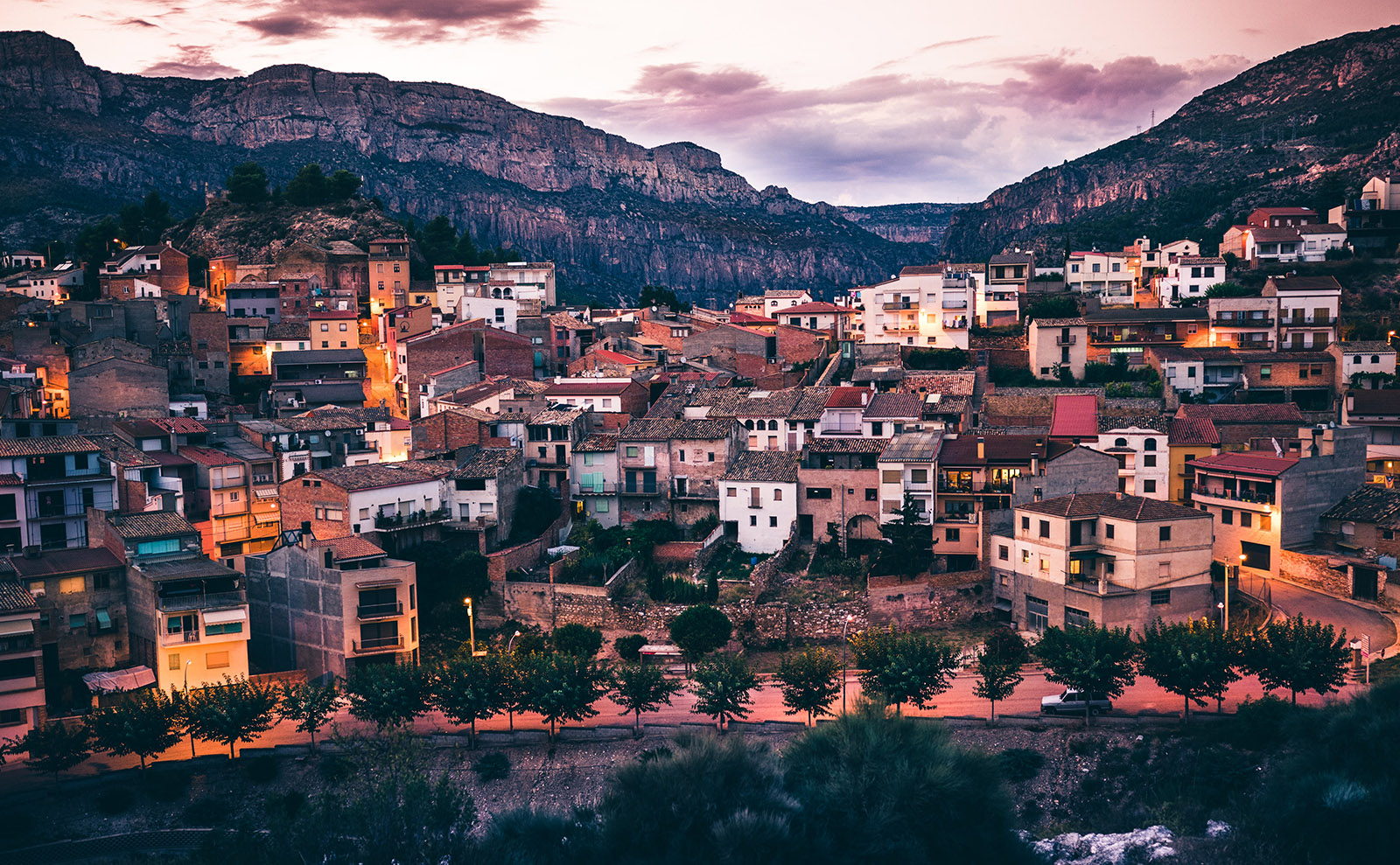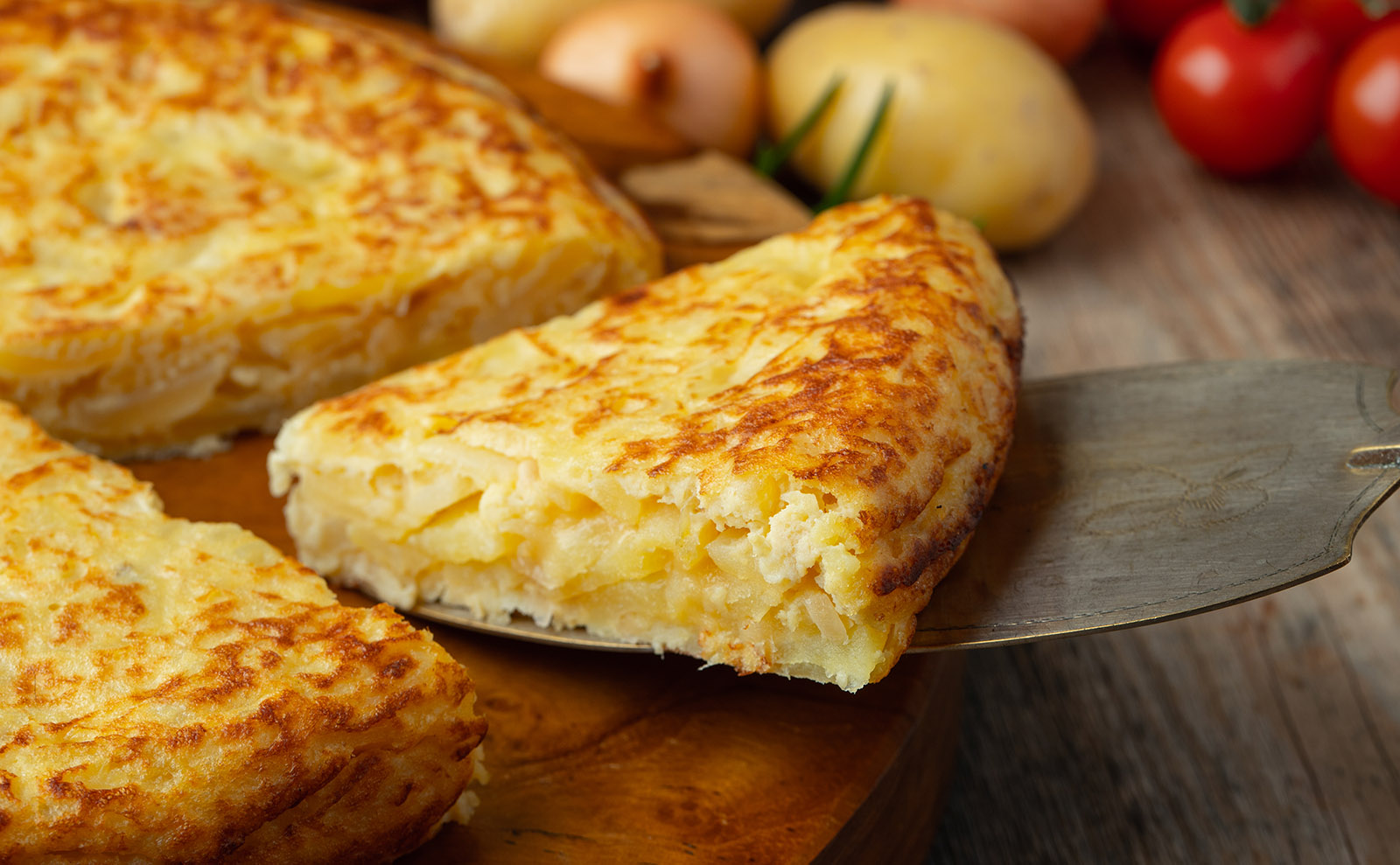
Armchair travel around the world!
Start your reading adventures with our FREE Reading Atlas.

- Around the World in 14 Books
- 7 Thrilling Book Series
- 6 Audiobooks That Are Like Theater For Your Ears



Food and drinks are some of the easiest ways — and the most fun— to vicariously experience another culture. When you add a great book to the mix, you've got the makings of a perfect evening. In Food+Fiction, we recommend a delicious read and a related recipe so you can try the taste of different destinations in your own kitchen.
This post is part of our Food+Fiction series.

The region of Catalonia is tucked into the northeastern corner of the Iberian Peninsula. It’s ridiculously beautiful — the mountains, the trees, the sunshine — and it’s populated with fiercely independent people who are Catalonian first and everything else second.
The capital is Barcelona, with its colorful Gaudí buildings, friendly urban vibe, and moody Gothic architecture so brilliantly evoked in Carlos Ruiz Zafón’s The Shadow of the Wind.
But the lyrical, dreamy novel When I Sing, Mountains Dance will take you to a part of Catalonia that’s perhaps even more central to Catalan identity: the villages of the Pyrenees mountains. This deceptively simple story of one family’s love and strife is told through an unusual cast of narrators: black chanterelle mushrooms, a fawn being chased through the woods by hunters, a water sprite, a dog named Luna, and the Pyrenees themselves. It casts an enchanting spell and will make you yearn for a trip into those rocky hills for conversation and, if you’re lucky, a meal enjoyed in the soft light and air of twilight.
The potato omelet called tortilla de patatas is found in bars and restaurants throughout Spain. It’s eaten warm or at room temperature, on its own or turned into a sandwich, for breakfast, lunch, or a snack. And it’s one of those recipes that transcends its ingredients to be more than you expect.
It’s also sometimes the catalyst for a fierce debate: onions or not?
In Madrid, the answer is a firm ‘no.’ But in Catalonia, the answer is a resounding ‘yes.’ Yes, yes, yes to onions cooked slow and low in fruity olive oil until they melt into sweet tenderness.
This recipe asks two things of you: the best-quality ingredients you can find and a good deal of patience. But if you follow the instructions and give the omelet sufficient time to cook and rest, you will be richly rewarded.
It’s wise to remember that no two tortillas are the same: each family, each cook, and each bar has its own recipe and technique — and each is loved for its individuality.

Serves 6-8. Total time 75 minutes.
Prep the potatoes. Peel the potatoes and rinse them under cold water. Slice the potatoes into slices about 1/8-inch thick. A mandolin or food processor is excellent for this!
Cook the potatoes. Heat 1/2-inch of the olive oil in a 10-inch nonstick or cast-iron skillet over high heat, 3-5 minutes. When it’s hot, add half the potatoes. Reduce the heat to medium and cover with a lid. Cook the potatoes until they’re tender, about 5-6 minutes. Use a slotted spoon to transfer the potatoes to a bowl and stir in 1 1/2 teaspoons salt; stir to combine. Repeat this process with the remaining potatoes. (Yes, salt the second batch of potatoes, too.)
Cook the onion. Pour off all but 1-2 tablespoons of the oil and save it. Reduce the heat under the pan to medium-low. To the oil remaining in the skillet, add the onion and 1 teaspoon salt. Cook, uncovered and stirring often, until it’s translucent and very soft. This takes about 15 minutes.
Prep the eggs. Beat the eggs in a large bowl, then add the potatoes and onion to the eggs. Stir until everything is well combined. Let this magical elixir sit for 15-20 minutes.
Cook the tortilla. Place 1-2 tablespoons of the reserved oil in the skillet and heat over medium-low. Add the egg mixture and spread it into an even layer. Cook the tortilla until the bottom is golden brown, about 10 minutes. If the bottom browns too much before the center is set, lower the heat. If the bottom is not getting good color, but the egg is setting, increase the heat for a minute or two to blast some color into it.
Cook the other side. To flip the tortilla, run a rubber spatula around the edge of the pan to loosen the tortilla. Place a dinner plate or cutting board over the top of the pan and invert it, so the tortilla is now on the plate, cooked side up. Slide the tortilla back into the pan, uncooked side down. Increase the heat to medium. Cook until the bottom is a pretty golden brown, about 5-7 minutes. Your timing here will vary. You can check doneness by pressing your finger to the top of the tortilla. It should have some give but not be squishy.
To serve, slide the tortilla onto a serving dish or cutting board. Let it cool to room temperature, then cut it into wedges and devour.
An early yellow sun slips through the leaves of the trees. And I hear the river flowing happily. Once I step off the damp, sunken footpath and head up, I see a few scattered homes in the distance, on the other side of the crest. The mountains there in the background, they could even be France already, with Espinavell at the far end, and, my god, what a landscape. We have such amazing vistas and incredible mountains, we should be so proud, but sometimes, crowded together in Barcelona, we forget all about them. And they’re gorgeous as anything. Eye-piercingly gorgeous. You have to come up here in the fall, when the crest line turns from one color to another, now red, now chestnut brown, now the beige of a Pyrenean cow’s snout, now ochre, now orange, now deep garnet and colors you’ve never seen before in your life, with a sun yellow as an egg yolk. Man, I love walking through these mountains. I just love it so much. It’s thrilling. The cows, the crests. And there in the distance, the Canigou. That place. Oh, how it fills the heart. — Irene Solá
This compact, heartrending novel weaves together stories of life in a present-day village in the Pyrenees mountains of Catalonia. The plot is straightforward enough: A farmer — who is also a poet — is struck by lightning during a storm and dies on the mountainside. He leaves behind a wife and two children. The novel tells the story of their lives. But the author Irene Solá is a word witch who casts a magic spell. The chapters are told from the point-of-view of various non-human narrators. So, we hear from the family Domenec left behind, yes, but we also get the perspective of black chanterelle mushrooms, a fawn being chased through the woods by hunters, a water sprite, a dog named Luna, and the Pyrenees mountains themselves. {more}
This lyrical family story (208 pages) was published in March of 2022 by Graywolf Press. The book takes you to the Pyrenees of Catalonia, Spain. Melissa read When I Sing, Mountains Dance and loved it; it wouldn't be on our site if she didn't recommend it.
Bookshop.org is an online bookstore with a mission to financially support independent bookstores and give back to the book community.
Top image courtesy of Erwan Martin/Unsplash.
Want to keep up with our book-related adventures? Sign up for our newsletter!
Can you help us? If you like this article, share it your friends!
Strong Sense of Place is a website and podcast dedicated to literary travel and books we love. Reading good books increases empathy. Empathy is good for all of us and the amazing world we inhabit.
Strong Sense of Place is a listener-supported podcast. If you like the work we do, you can help make it happen by joining our Patreon! That'll unlock bonus content for you, too — including Mel's secret book reviews and Dave's behind-the-scenes notes for the latest Two Truths and a Lie.
Join our Substack to get our FREE newsletter with podcast updates and behind-the-scenes info — and join in fun chats about books and travel with other lovely readers.

We'll share enough detail to help you decide if a book is for you, but we'll never ruin plot twists or give away the ending.
Content on this site is ©2026 by Smudge Publishing, unless otherwise noted. Peace be with you, person who reads the small type.